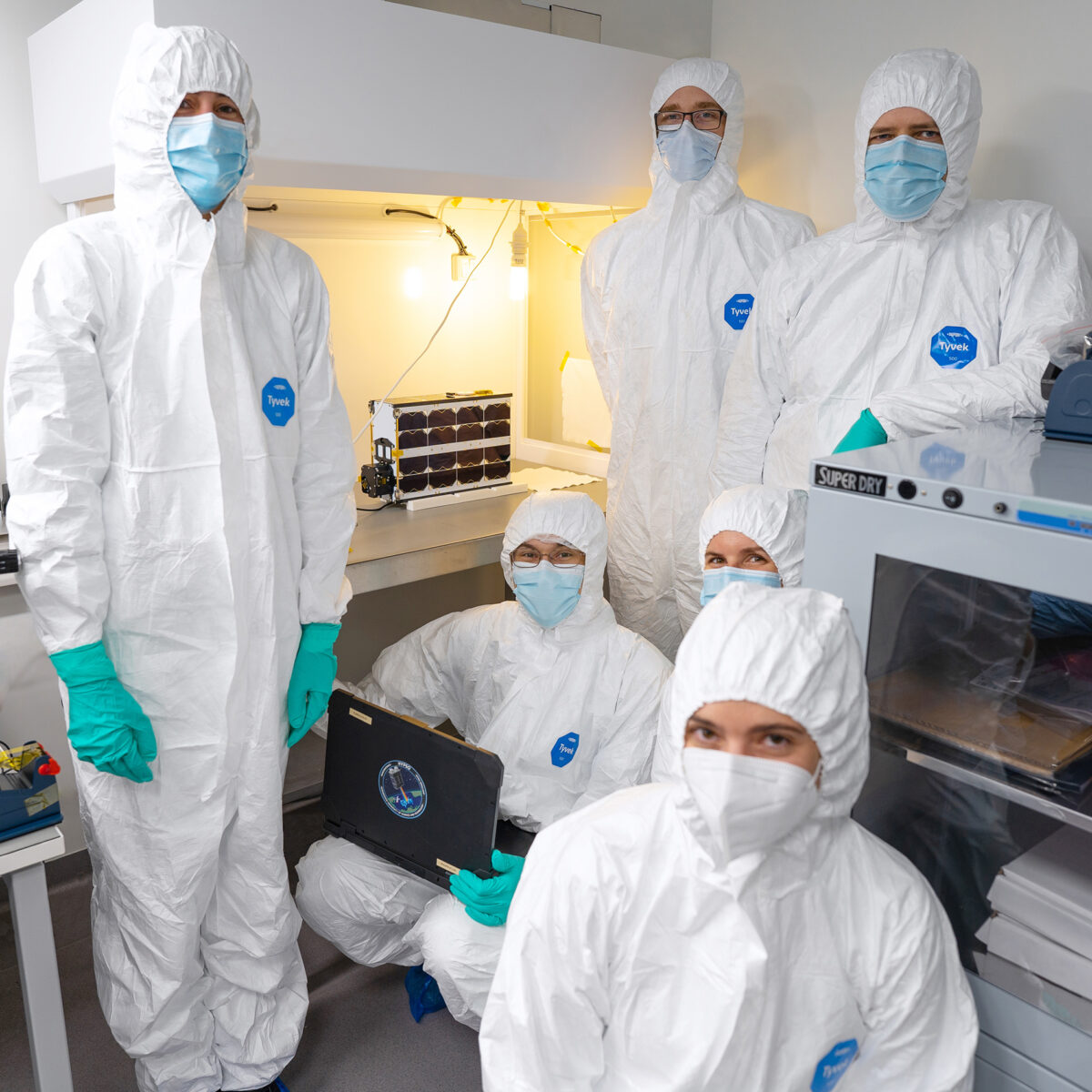This week NTNU will launch the first research satellite made by a Norwegian university. The small satellite «HYPSO-1» will take off with a Spacex Falcon-9 rocket from Kennedy Space Center, Florida. The mission: to scan ocean and lakes from 500 km above the earth.
Using a hyperspectral camera, the plan is that HYPSO-1 can reveal harmful algal blooms and pollution in the ocean, blooms that can threaten ecosystems in seas and lakes.
«This is a milestone for NTNU and Norwegian research. I hope this project can contribute to a national program for satellite research of the earth and the ocean,» NTNU-rector Anne Borg, said.
She is full of praise for the 80 students and researchers involved in constructing HYPSO-1 at bachelor-, master- and PhD level.
The construction process has lasted for four years, and now it remains to see whether the satellite will work.
«I am excited and have been for a long time. The launch will most likely go well. The parts will probably work and the camera hopefully function. It has been shocked, vibrated, exposed to vacuum, and successfully tested afterwards. But I am excited to see if we get the first picture», Evelyn Honoré-Livermore, PhD-student at NTNU’s Department for Electronical Engineering and NTNU AMOS, Center of Excellence, said.
She has been the project leader of HYPSO-1 and has just delivered her PhD thesis related to the mission.
Environmental mission
If the mission succeeds, NTNU will be the first Norwegian university to have a small satellite fully dedicated to research in orbit around the earth. HYPSO-1 is also one of the first hyperspectral satellites in the world.
«The Norwegian space industry must position itself for the expected growth in international space industry. NTNU is ready to do research and develop technology that can contribute to a strong, Norwegian position in the new space age. We have a solid foundation and can compete with the large international players», Ingrid Schjølberg, dean at the Faculty of Information Technology and Electrical Engineering, said.
According to the plan HYPSO-1 will orbit the earth for five years.
«It has taken four years of building and testing the satellite. This is around the average time used on universities to build a small satellite,» Honoré-Livermore told. The construction of bigger satellites can take from ten to twelve years.
Her PhD thesis is about how interdisciplinary teams, and teams with high turnover – which is the case in a university where students complete their degrees – can build such a complex thing as a small satellite in an efficient manner.
«I wanted to find to what extent good processes and working methods can contribute to a small satellite, so we can build more in the future here in Norway» Honoré-Livermore said.
Third try
Statistically the success rate has been 60 percent up until 2019, she explains.
«Today we have better components and information sharing. The developing process is more reliable. I believe the success rates are higher now.»
NTNU was involved in two launches of student-developed satellites 15 years ago that failed.
«There has been a huge development since then. I think we will succeed this time», Honoré-Livermore said.
Follow the launch here at Facebook NTNU SmallSat Lab!
What is HYPSO-1?
- A small satellite 10 x 20 x 30 cm that weighs 7 kilos with 6-liter volume.
- HYPSO stands for HYPer-spectral Smallsat for ocean Observation
Contacts
- Forsker: Roger Birkeland roger.birkeland@ntnu.no. Tel. + 47 977 08 109
- PhD-student Evelyn Honoré-Livermore: evelyn.livermore@ntnu.no. Tel: +73 559 112
- Rector Anne Borg via Live Oftedahl: live.oftedahl@ntnu.no. Tel: 92 222 481
- Dean Ingrid Schjølberg: ingrid.schjolberg@ntnu.no. Tel: 930 66 355

